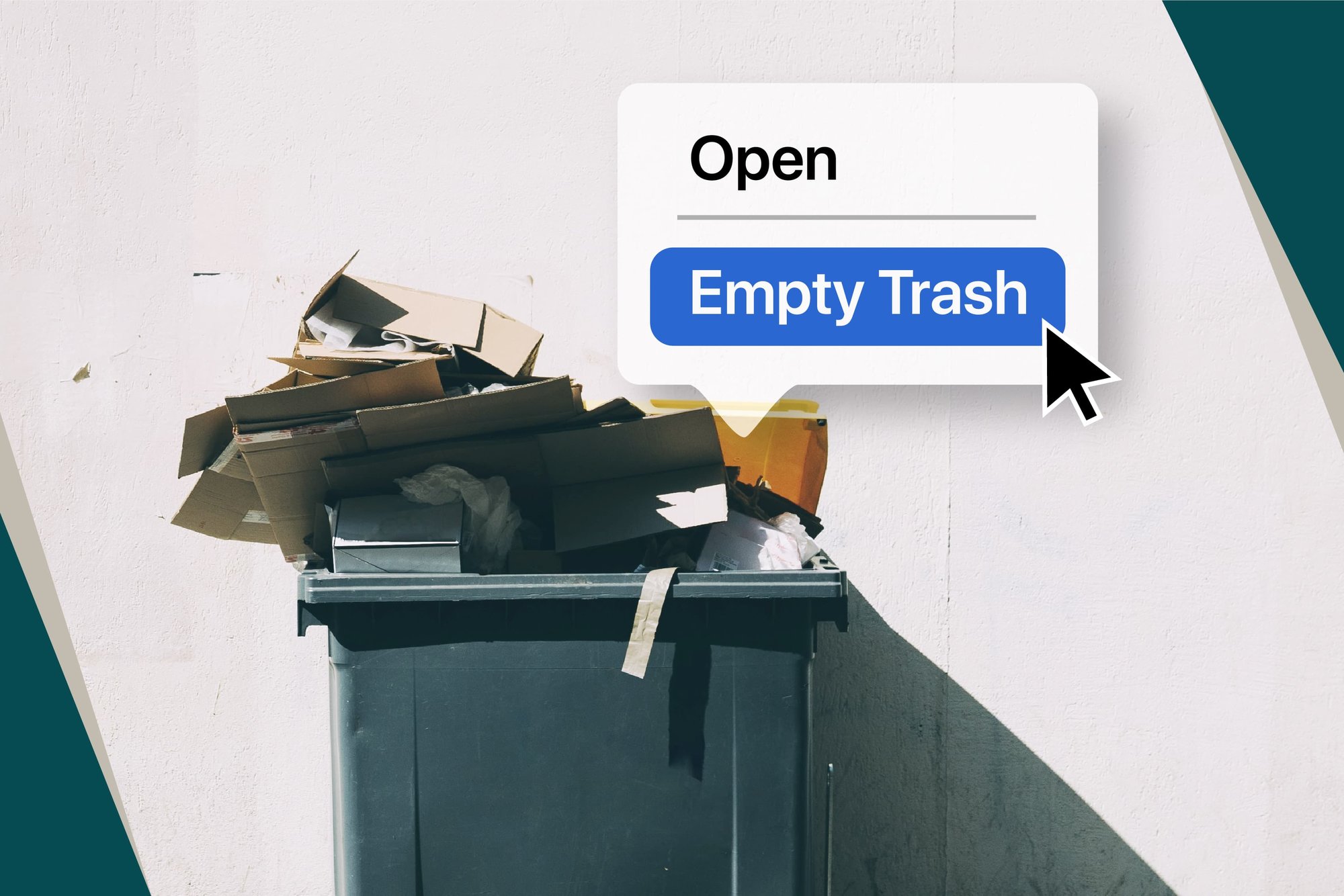Why Green Hosting Matters: The Major Environmental Impact of Data Hosting and How We Can Fix It (Digital Sustainability - Part 3)
Making greener choices related to technology infrastructure is crucial to reduce the negative impact on our environment. In the last installment of our three-part series on digital sustainability, we explore why and how companies can choose more sustainable options for data hosting and beyond.

When I was writing Part 1 and Part 2 of this series on digital sustainability, my research led me to many resources to calculate every small detail of my carbon footprint, with all its variables and complexities. I decided that this wasn’t the most efficient use of my time, because an individual’s footprint is small in the grand scheme. Ultimately, while we can all make greener choices individually, it’s more important for companies, because they can have a much greater impact. And the environmental impact of the digital world cannot be understated. Digital feeds off of electricity – the biggest source of carbon emissions (25%). From the data centers that keep the world wide web going, to the devices we use to access it, to all the physical hardware produced in factories (20%), and transported all around the world (15%)… you get the idea.
However, the bigger the scale, the bigger the challenges – and the more complex the solutions. Much of the discussion around reducing climate change on an organisational level oversimplifies the solutions, urging us to reduce Zoom video calls and scrap our current infrastructure to shift to greener options. Whilst the shift to greener needs to be ambitious, it also needs to remain grounded. And this always requires trade-offs.
In Part 2 of this series, I wrote about the positive environmental impact of tidy code and lean interactions. These practices are relatively easy for companies to implement because they also align with the latest best practices, and they typically don’t require ‘hard choices’ at the executive level. Today, I will explain the concept of ‘green hosting’ – a more complicated, but significantly impactful, issue – and share actionable ways to make greener technology choices.
What does ‘data hosting’ actually mean, and how does it affect energy consumption?
Before I dive in, I must admit that writing the last part of this series about green hosting has been the most difficult. I previously read about the high level of energy consumption associated with data hosting, but something about this concept made my brain chase its tail. So I decided I need to learn more.
My main challenge was wrapping my head around the definition of data hosting. I couldn’t find a clear and visual definition to help me understand the issues that green hosting can solve… or at least a definition that’s easily understood by a less-technical person like me who thinks ‘CDN’ and ‘DNS’ sound like a rap duo.
To help me get started, I looked at the definition of ‘data center,’ which is where data hosting takes place. Data centers are commonly perceived as the ‘brains of the internet.’ They facilitate our day-to-day information services by hosting, interpreting, and sending data back to users. Have you binge-watched an old season of ‘Friends’ on Netflix recently? Shared your latest banana bread recipe on Instagram? Messaged your mom on Whatsapp? All of this is facilitated by data centers. Energy Innovation defines it well: “Data centers utilize different information technology (IT) devices to provide these services, all of which are powered by electricity. Servers provide computations and logic in response to information requests, while storage drives house the files and data needed to meet those requests. Network devices connect the data center to the internet, enabling incoming and outgoing data flows.”
It’s easy to find statistics on how much energy data centers use, which is (spoiler alert) a lot. But I wanted to better understand the process and where exactly all this energy is being used. To dig in deeper, I spoke with our tech lead at Whitespectre, Rafal Baron. He helped create the following diagram to explain why hosting consumes so much energy – especially when it’s done inefficiently.
(Disclaimer: this is a very simplified view)

Here’s an overview of how data centers consume energy based on the diagram above:
- Let’s say a user wants to access your web app. Firstly, their request gets translated into web lingo by DNS, that I’ve called “the bookworm,” and sent back to them.
- Then, it passes through “the protector” layer, which shields it against enemy attacks (i.e. security breaches).
- Next up, the request is sent through the data center named “the mothership'' that cozily hosts your actual application. The mothership facilitates the connection between the users and the application code, which “transforms data to provide the specialized functionality provided by your application” (Ngnix).
- The mothership is often connected to other data centers, the “content delivery squad'' that holds and delivers all the exciting content in the application like images, jazzy tunes, and cat videos. But just like we wouldn’t like our pizza delivered cold, we don’t like long load times. So the delivery squad is physically positioned all across the world to ensure your cat videos arrive as quickly and efficiently to your users.
As consumer demand for digital content grows, data centers need to increase protection and efficiency while catering to the increased number of requests and complexity of applications – especially with the rise of AI. It’s no wonder data centers are springing up like mushrooms across the globe. The more digital content we use, the more energy is needed by users (from plugging in our devices and using WiFi) and hosts (from storing and transmitting data). Data centers use power 24/7 to cater to our ever-increasing demand, and servers need powerful cooling systems which consume massive amounts of energy.
How can companies make data hosting more environmentally friendly?
Now that we understand how data centers work and how much electricity they consume, the next question is: how can data hosting become more ‘green’?

‘Green hosting’ is a solution whereby companies work with green hosting providers who aim to reduce the negative impact on the environment caused by data hosting. Tom Greenwood in his book Sustainable Web Design outlines different types of contracts a green host provider requires, such as owning the renewables, funding new renewables, buying renewable energy, buying renewable energy credits or carbon offsetting. However, even the biggest hosting providers make up a small portion of data centers, so it can be difficult for them to dictate where all of the data center’s energy comes from. For example, one of the largest data centers in the world, Equinix, hosts big companies such as Zoom and Lufthansa among many others.
Picking a green hosting provider can be difficult, especially when ‘green’ is often used as a fancy marketing term of little substance. So, when choosing one, do your research and ask as many questions as you need. A good green hosting provider would thoroughly outline their green policies, and be more than happy to answer your questions. However, there will be multiple evaluation points. There are things on the ‘greener’ side, i.e. checking the contract to understand if their data center is mostly powered by green energy (better) vs. simply offsetting. Also, ideally, they would be invested in the cause and support other climate change campaigns. And there are things to evaluate on the reliability side, i.e. green energy can be quite unstable when it’s dependent on unpredictable sources (if we could only control when the sun is shining!), so making sure they have a back-up plan in case of shortages. Other important questions to ask are what type of hosting they offer, the level of support and features they provide, where their servers are located (the closer, the greener), the platforms they specialise in, and security (TechRadar). At Whitespectre, we are developing a Digital Sustainability Toolkit that will help guide your choices for greener tech (watch the space!)
However, things get trickier if you are a large company, and/or already have a provider that you have invested a lot of time and effort in. At Whitespectre, our own and our clients’ applications are hosted on AWS, which is still not fully powered by renewables but committed to be so by 2025. Switching to a completely green provider at this scale would take a lot of manpower and infrastructural changes, with potentially high risks for us and our clients. But, change is possible. If we draw a parallel to airplane travel – today, most of us know how bad it is for the environment because it’s been openly discussed and publicized. This discussion created momentum that made governments look into policies such as frequent travel levy and even banning domestic flights. The ban on domestic flights is already happening in some countries such as France and Austria. Similarly to that, in the world of green hosting, creating momentum by spreading the word and collectively pushing established providers to change, is a more practical way for us to do our part. Whitespectre is also focused on offsetting and reevaluating our choices, as well as donating to organizations that are enacting change.
In Part One and Part Two, I wrote about being more data-mindful and the importance of device longevity and efficiency. These are great ways to start the conversation on digital sustainability, not only within our circles and communities, but also in the workplace. Whitespectre has given me incredible encouragement and the platform to share my knowledge about digital sustainability with the full team and beyond. They’ve pushed me to be braver about asking questions and digging deeper.
Why the urgency?
The UN Climate Change Conference, which took place where I live, in Glasgow, UK this year, united leaders in the race against climate change. The city transformed around the conference, charged with excitement and determination, but also anger and frustration of what were perceived as empty promises. The result of it, the Glasgow Pact, committed countries to cut down emissions, “phase down” coal (change from “phase out”), and provide climate finance to poorer countries (Guardian). The goal is to limit the global temperature increase to 1.5 degrees, and protect communities and natural habitats. For context, if we reach a global temperature increase of only 0.5 degrees more, “Almost all warm water coral reefs would be destroyed, and the Arctic sea ice would melt entirely at least one summer per decade, with devastating impacts on the wildlife and communities they support” (from COP26 - Explained).
The urgency is real, the goals are ambitious, and drastic actions are needed. The best way we can help as individuals is to stay informed, be conscious consumers of physical and digital products, and participate in global and local campaigns. Most importantly, we need to push ourselves to raise these difficult and complex topics and inspire the desire to change, in our families, friend groups, wider communities and workplaces today.
Further Reading
- In the podcast episode of “How to save a planet” - “Is Your Carbon Footprint BS?”, the hosts discuss individual carbon footprint with their guest Dr. Katharine Wilkinson, a writer and climate change activist. They list the six sources of greenhouse gasses globally, which are
- 25% electricity production;
- 24% for agriculture and land (what we grow and how we grow it, including meat and dairy industry);
- 20% for other industry (all the factories and industries that produce our everyday things such as consumer goods, concrete, cement, steal);
- 15% for transportation;
- 10% from the actual extraction of the fossil fuels (i.e. methane escaping from storage sites);
- 5% for buildings
Dr. Wilkinson states that the average American’s carbon footprint is 16 tonnes (note that Americans do have big footprints in comparison to other nations). Compared to the 50 billion tonnes of the industry, is a 0.0000000003 percentage point of the problem.
- More detailed advice on how to pick a green host by Tom Greenwood in “How to choose a green web host”, and his book Sustainable Web Design and by A2Hosting in “What Is a Green Web Host (And How to Choose One)?”
- More general guidelines on how to pick a hosting provider by TechRadar
- A useful directory of green providers can be found here
